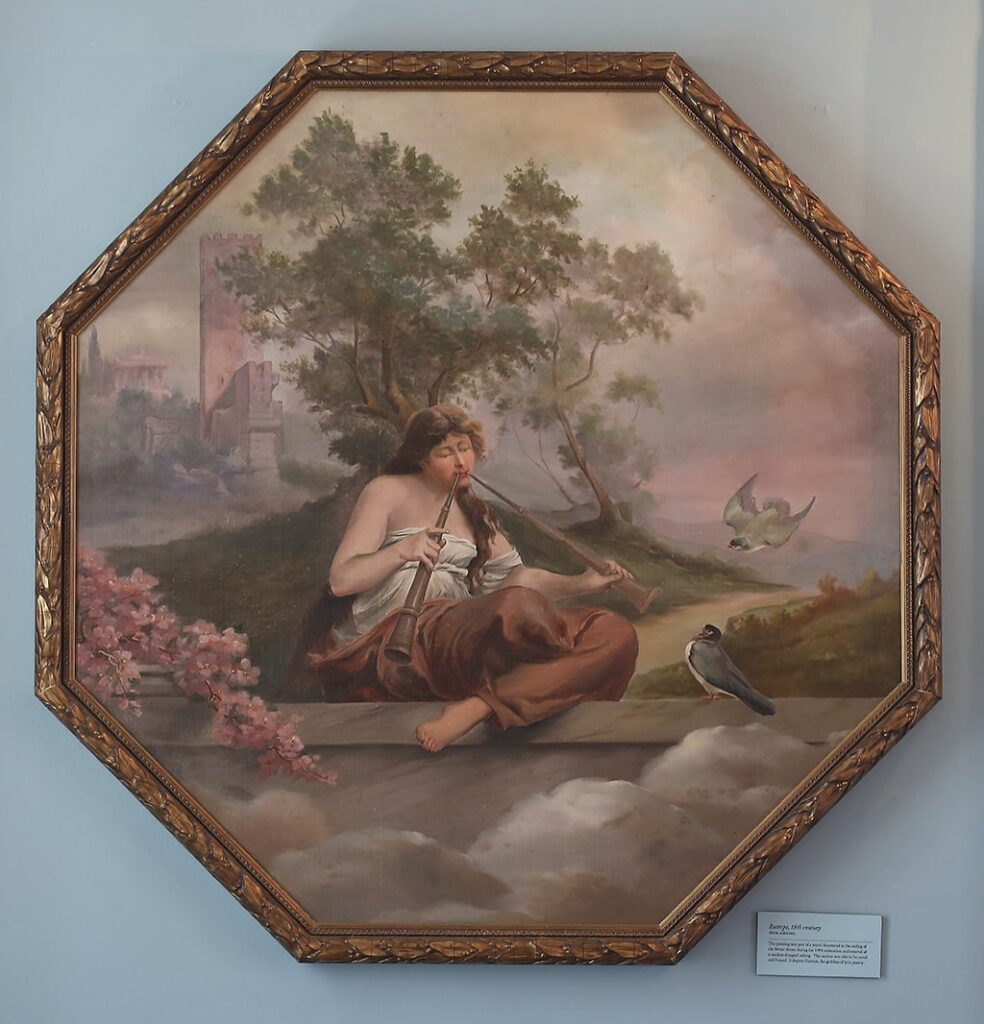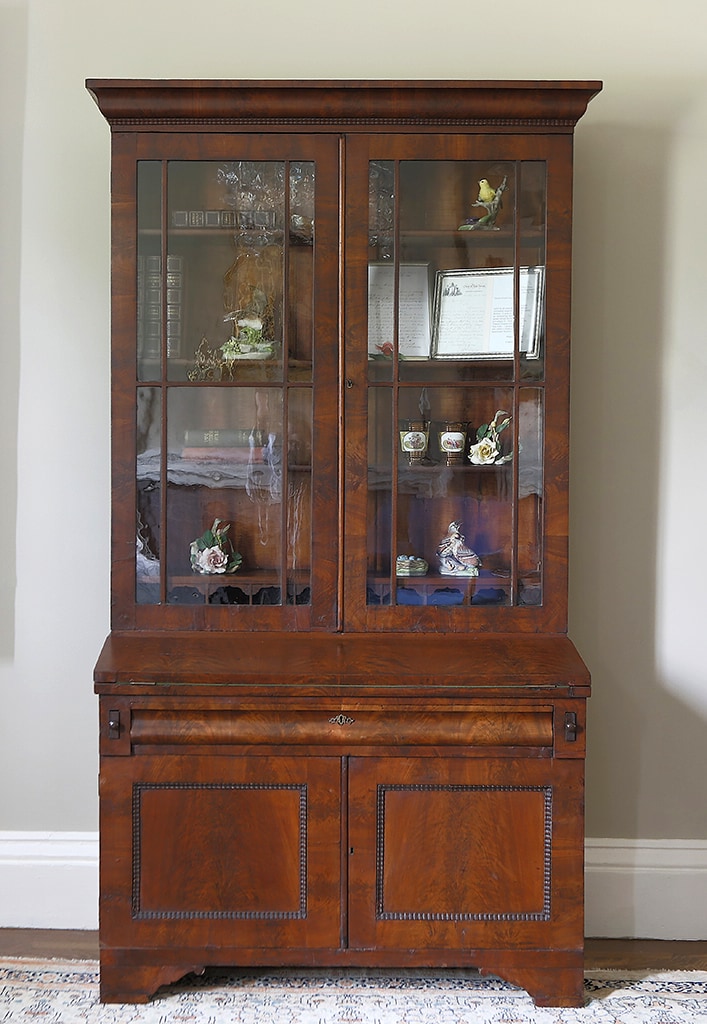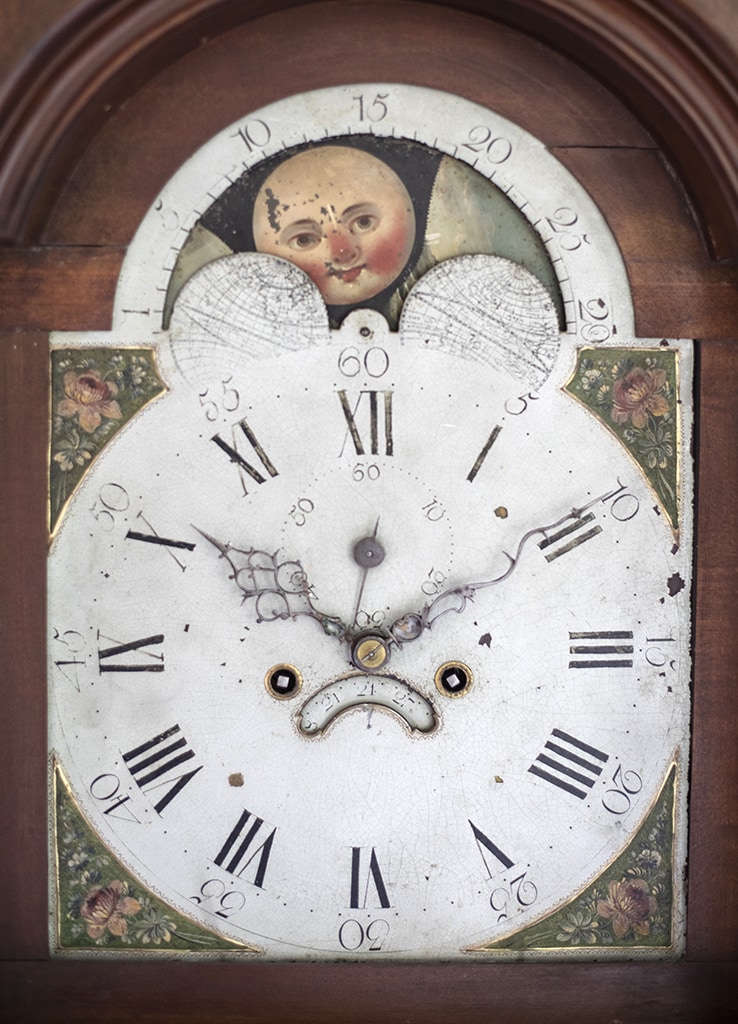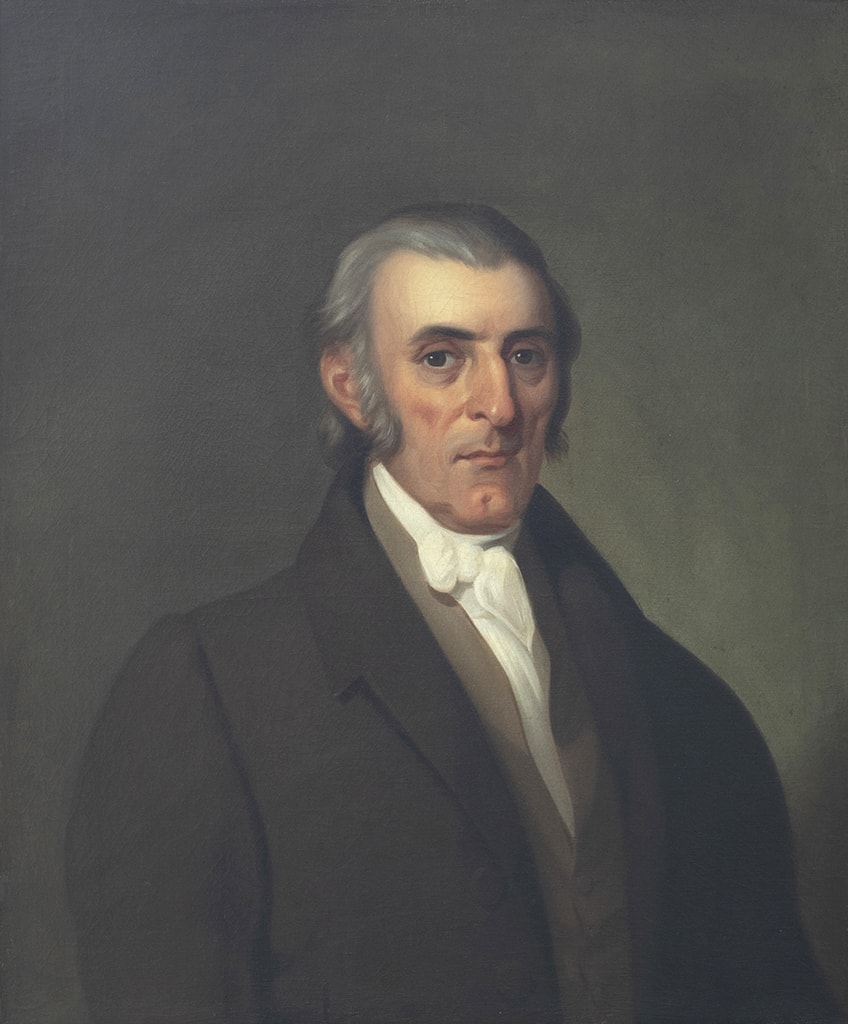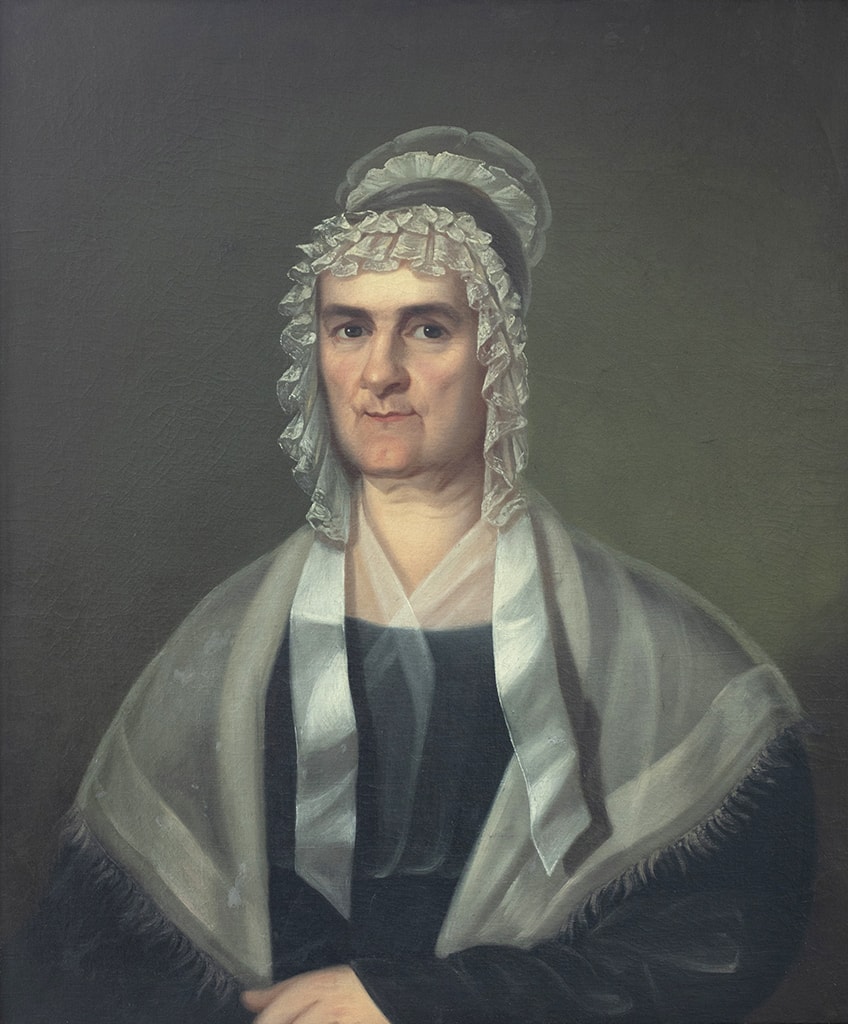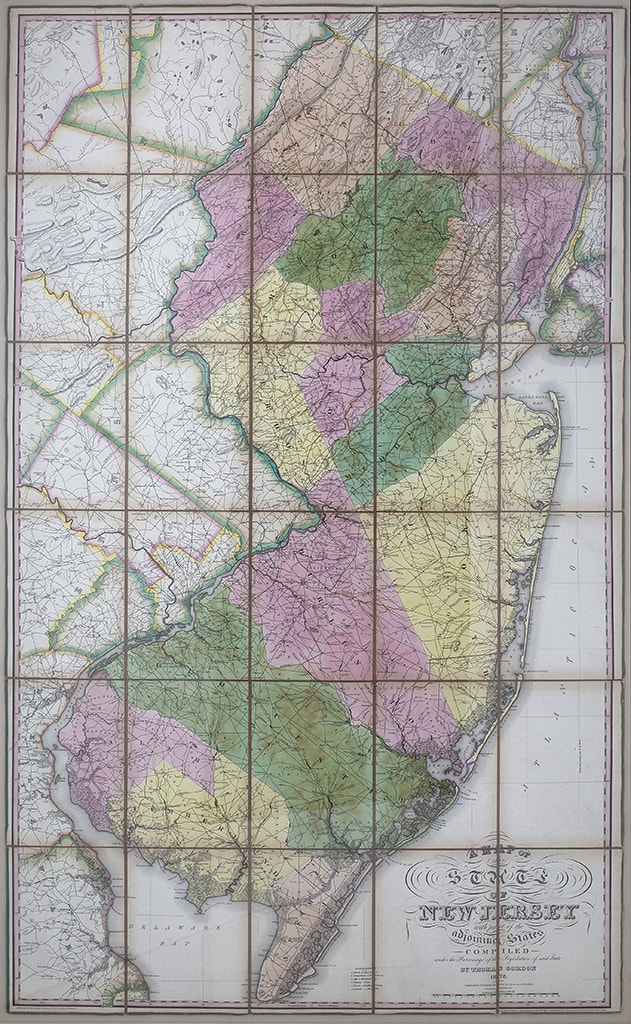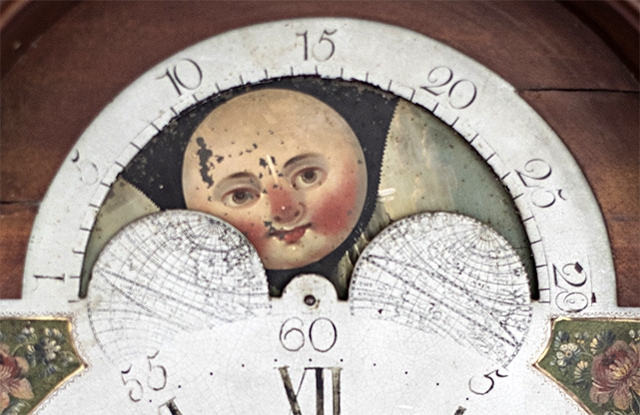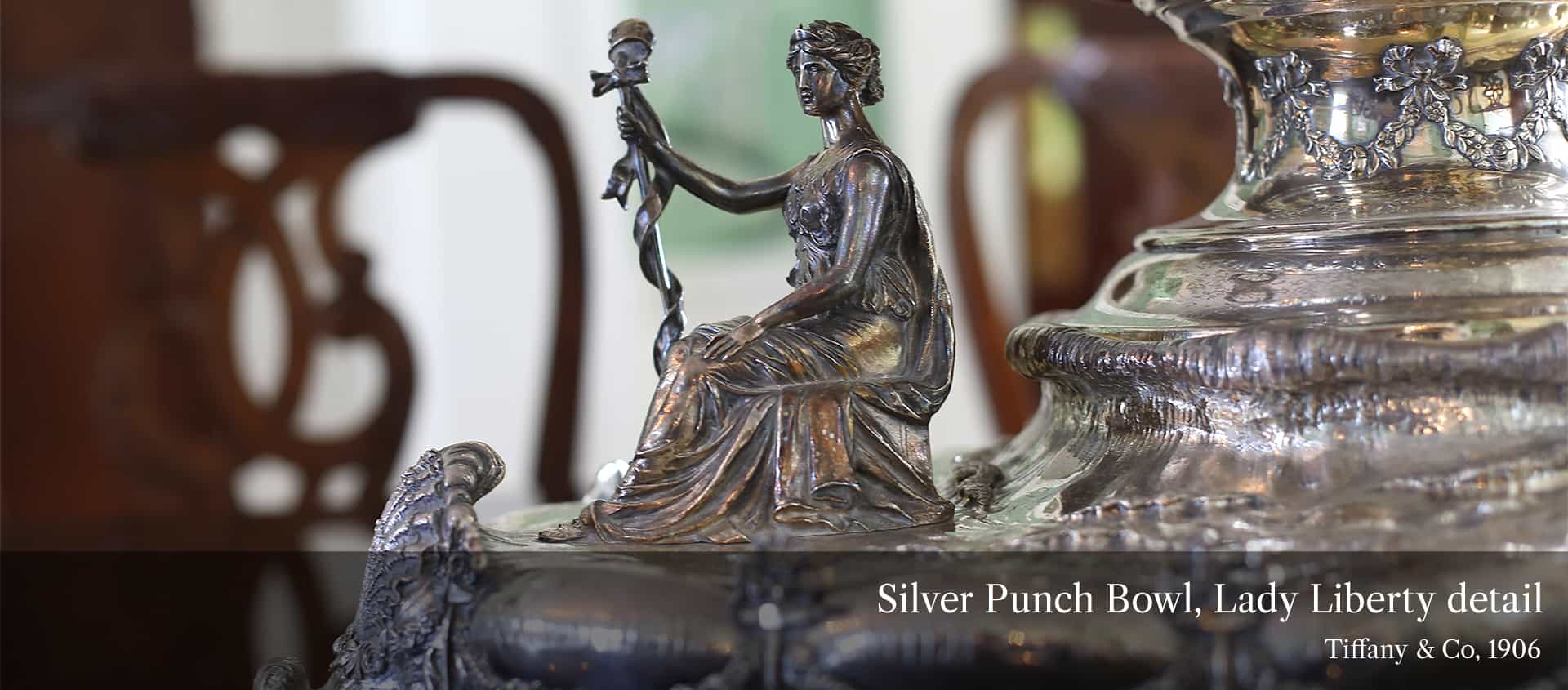
Collection Highlights
Tour the historic residence and learn about the Foundation’s collection of 18th and 19th-century furniture, paintings, and objets d’art. Tours are held most Wednesdays and are always free. Advanced online registration is required.
Click images to see larger or alternate views
Tap images to see larger or alternate views
Flame Mahogany Tall Case Clock, detail
Matthew Egerton, Jr. (1769-1836)
Gift of Betty W. Johnson and Douglas F. Bushnell
Matthew Egerton Jr. joined his father’s Mathew Egerton (1739-1802) furniture shop on Burnet Street in New Brunswick, NJ and established it as a leading maker of furniture and clocks in Colonial America. The Foundation’s collection includes seven fine examples of Egerton’s work; each retains the original label of the Egerton shop.
Portraits of Hart and Temperance Smith Olden, c.1810
Anonymous
Oil on canvas
Gift of Mr. and Mrs. C. Donald Carroll and Heather Williams
Hart (1767-1841) and Temperance Smith Olden (1755 – 1841) were the parents of Charles Smith Olden (1799-1876) who was elected Governor of New Jersey in 1860 and built Drumthwacket in 1835. The Oldens were Quakers and dressed ‘plainly’ as part of their approach to spiritual life. An inscription of the reverse of the paintings reads, “Painted in Princeton, 1810”.
New Jersey State Map, 1828
Gordon, Thomas (American, 1778-1848)
Gift in Memory of Harold W. Pote (1946-2007), Princeton University Class of 1968 & Proud New Jerseyan
In 1822, the New Jersey state legislature commissioned Thomas Gordon to compile and publish an official state map. Six years later, in 1828, Gordon published this remarkable large wall map of the state based upon an engraving by Henry S. Tanner, E.B. Dawson and W. Allen. Gordon’s map became the standard for accurate and detailed mapping of the state and was used as the basis for other New Jersey maps well into the 19th century.
Sterling Silver Punch Bowl, detail
Tiffany & Co.
United States Navy, long term loan
The punchbowl is part of an impressive sterling silver service set made by Tiffany & Co. for the commissioning of the battleship USS New Jersey in 1906 for use in the wardroom. The punchbowl is decorated with symbols of New Jersey, the United States and the Navy. Seated at the base are figures of Liberty (shown) and Plenty as seen on the State Flag.
Albert Einstein, c. 1938
Samuel Johnson Woolf (1880-1948)
Oil on canvas
Gift of Bernard and Bebe Perliss
The portrait of Albert Einstein (1879-1955) was featured on the April 4, 1938 cover of Time magazine. Einstein’s image appeared on Time’s cover six different times including the December 31, 1999 issue in which he was named the “Man of the Century.” One of Princeton’s most famous residents, Einstein taught and performed research at the Institute for Advanced Study in Princeton, NJ from 1932 until his death in 1955. Physicist Leo Szilard, a close friend of Einstein who also worked at the Institute, lived at Drumthwacket for over a year in the early 1950s as a house guest of the Spanels. It was Szilard who drafted and urged Einstein to sign the historic 1939 letter to President Franklin Roosevelt warning about German nuclear weapons research. The letter is considered one of the most important missives written in the last 100 years.

